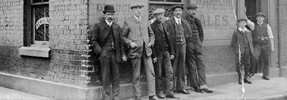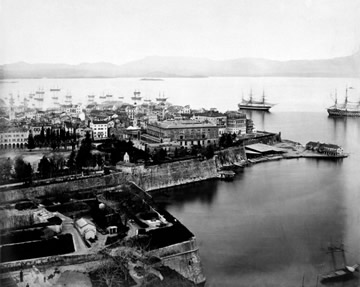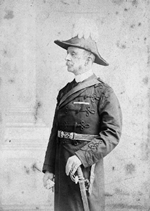William Paddy
Early Years
My Great Great Grandfather William Paddy was christened on 18th May 1829 at St Michael's Church in Coventry, Warwickshire the son of William & Elizabeth Paddy. His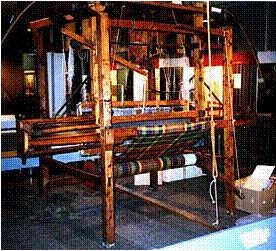 parents were both engaged in the silk ribbon weaving industry which employed thousands of local people in and around Coventry in the early to mid 19th Century. Workers would own their own Jacquard looms (illustrated right) with silk distributed to them by silk merchants for them to weave in their own homes. For more information on silk ribbon weaving in Coventry follow this link.
parents were both engaged in the silk ribbon weaving industry which employed thousands of local people in and around Coventry in the early to mid 19th Century. Workers would own their own Jacquard looms (illustrated right) with silk distributed to them by silk merchants for them to weave in their own homes. For more information on silk ribbon weaving in Coventry follow this link.
The 1841 census shows that William was educated at Bablake Boys School (pictured below) in Coventry. Bablake boy's school was founded in 1560 with forty-one boys in attendance. The School was mostly dependent on charitable gifts until 1563, when Thomas Wheatley, who had been Mayor of Coventry in 1556, endowed it with much of his estate. The School of this time committed itself to giving free board, clothing and education to poor boys who were to become apprentices.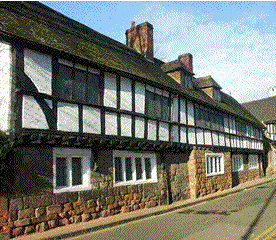
Very little is known of the progress of Bablake in the seventeenth and eighteenth centuries. Throughout this time the boys would have worn the traditional ‘Blue Coat’ uniform: a long tunic of dark blue cloth, with a leather girdle, yellow petticoat, yellow stockings, low buckled shoes, linen collar with bands, round black worsted cap with yellow tassel.
Army Service
Army records show that William Paddy enlisted in the 36th Regiment of Foot at Gosport Hampshire on the 31st December 1846 where he was described as being 5ft 6in tall with blue eyes and a fair complexion. The 36th Regiment can be traced back to 1701 when at the outbreak of the War of the Spanish Succession King William III ordered Viscount Charlemont to form a new Regiment in Ireland. In 1782 individual Regiments began to be linked territorially to counties and the 36th Regiment of Foot was linked to Herefordshire becoming the 36th (Herefordshire) Regiment of Foot.
back to 1701 when at the outbreak of the War of the Spanish Succession King William III ordered Viscount Charlemont to form a new Regiment in Ireland. In 1782 individual Regiments began to be linked territorially to counties and the 36th Regiment of Foot was linked to Herefordshire becoming the 36th (Herefordshire) Regiment of Foot.
His army career as detailed in his Army Service Record now stored at the National Archives at Kew in WO97/1506 is as follows;
- He was appointed to Private (3030) on 31 Dec 1846 until 10th November 1850.
- On 11th November 1850 he was promoted to Corporal until 21st December 1850.
- The records show that between 22/12/1850 and 25/12/1850 he was imprisoned following a Court Martial and demoted to Private again. No record of his offence is given in the record but given the time of year it looks like a Christmas Party which might have got a little out of hand!!
- He served as Private again from 24/12/1850 until he was once again promoted to Corporal on 7/12/1854.
- He served as Corporal from this date until 1/12/1857 when he was then promoted to Sergeant a position he held until 31/1/1860.
- On 1/2/1860 William was promoted to Colour Sergeant until on 25/11/1865 he asked to revert to Platoon Sergeant. It was as Platoon Sergeant that he retired on 31st March 1868.
Postings
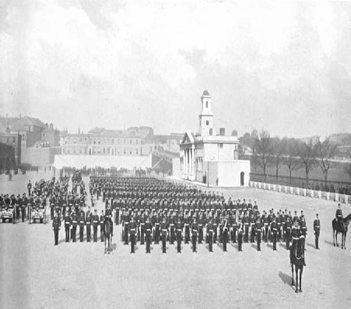
The Regiment moved to the West Indies between 1851 and 1856 carrying out duties in Barbados, Trinidad and Jamaica where William was posted for 6 years and 3 months. At some point between 1857 and 1860 the Regiment returned home to the UK with postings at Manchester, Aldershot and Devonport. It was during this period that William married Frances Evans on 6/4/1858 at Manchester whilst he was stationed at Salford Barracks. Their first daughter Mary Elizabeth Paddy was then born on 12/11/1859 whilst William and Frances were stationed at Raglan Barracks in Devonport.
Raglan Barracks (pictured left) was named in honour of Lord Fitzroy James Henry Somerset (1788-1855), first Baron Raglan 1852, who commanded the British forces at the Crimea in 1854. Built between 1854 & 1858 the whole area comprised eleven acres, of which 3½ were covered with buildings and 4½ acres were taken by the huge parade ground. It was constructed of yellow bricks and had flat roofs and lengthy verandas. The style gave rise to the story that the plans had been destined for a tropical location and came to Devonport by mistake. It was lit by over 1,000 gas jets. The married quarters were on part of the old George Square. Raglan Barracks was built to accommodate two entire regiments of the line, or 2,000 men and 80 officers.
The Regiment was then posted to Ireland during 1861 to 1863 with their second daughter Mary Frances Paddy being born in 1862 at Kilkenny. William’s final overseas posting was to India from 1864 where the Regiment was based variously in Lucknow, Shahjahanpore, Meean Meer, Peshawar, Rawalpindi and Subathu. William was posted there for 2 yrs 7 months.
His final period of Service was on loan to the 1st Cheshire Militia at Chester which would appear to have coincided with his decision to revert to Platoon Sergeant in November 1865. His period in Chester coincides with the birth of his son William in 1867.
It’s not clear how the various overseas terms of duty recorded in William’s army record fit precisely into the various movements of the Regiment given above, although more detail on the exact details of the regiment’s movements would tie things in more precisely.
William was in receipt of two Good Conduct Badges with the records noting that this would have been five had he not been promoted. He apparently appears 17 times in the Defaulters Book including his one Court Martial.
Retirement
He retired from the 36th Regiment on 14th April 1868 at the age of 39 after serving 21 years. His military service did not however stop with his retirement from the 36th Regiment. The 1871 Census shows William as a Staff Sergeant in the Militia in Barracks at Chester Volunteer Rifle Company. Local records of the Cheshire militia unfortunately fail to detail any of his service although much material has survived to describe its role at that time. It was essentially a volunteer force with members paying a joining fee and annual subscription to help fund its existence.
After his retirement from the Army William lived with his family in Crewe Street, Chester and worked as a Timekeeper for a local cabinet manufacturer. He died in Chester on the 7th January 1896 and is buried at Overleigh Cemetery, Chester. He is pictured (right) in the uniform of the Cheshire Volunteer Militia dated about 1870.


